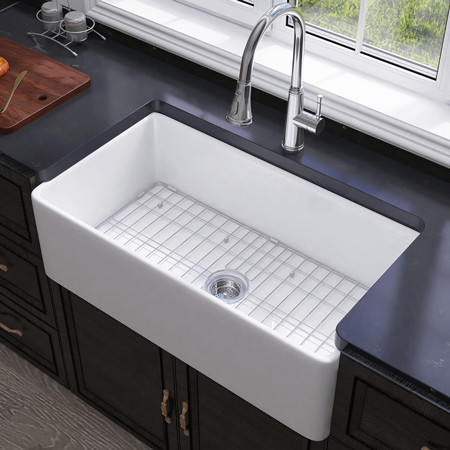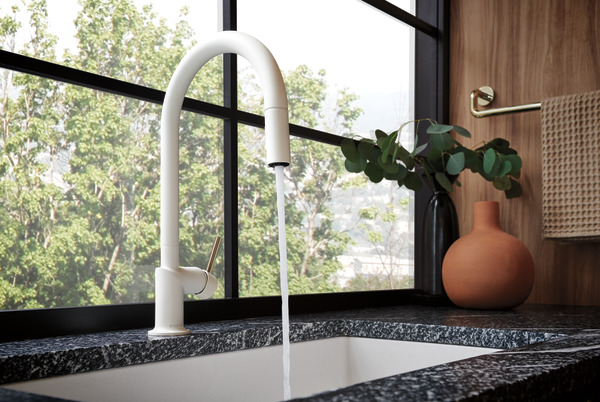
Farmhouse sinks, also known as apron-front sinks, are a popular choice for many homeowners looking to add a touch of rustic charm to their kitchens. These sinks are not only aesthetically pleasing but also highly functional, offering ample space for washing dishes, preparing food, and more. However, installing a farmhouse sink requires careful planning and execution to ensure a seamless integration into your kitchen. In this guide, we’ll explore key tips and considerations for installing a farmhouse sink, helping you achieve a beautiful and functional kitchen centerpiece.
1. Choose the Right Farmhouse Sink
Before you begin the installation process, it’s essential to select the right farmhouse sink that meets your needs and complements your kitchen design. Farmhouse sinks come in various materials, sizes, and styles, so take the time to explore your options.
- Material: Common materials include fireclay, stainless steel, cast iron, and copper. Fireclay is known for its durability and classic look, while stainless steel offers a sleek, modern appearance. Cast iron is heavy and durable but requires more maintenance, and copper provides a unique, rustic aesthetic but can be prone to patina over time.
- Size: Measure your available cabinet space to determine the appropriate size for your sink. Farmhouse sinks are typically larger than traditional sinks, so make sure your cabinetry can accommodate the size you choose.
- Style: Consider the style of your kitchen when selecting a farmhouse sink. Do you prefer a single or double bowl? Will you go for a classic white finish or a more contemporary look? The sink should harmonize with the overall design of your kitchen.
2. Assess Your Cabinetry
Farmhouse sinks are often larger and heavier than standard sinks, requiring modifications to your existing cabinetry. Before purchasing a sink, ensure that your cabinets can support the weight and size.
- Reinforcement: Depending on the material and size of your sink, you may need to reinforce the cabinetry to handle the added weight. This is especially important for cast iron and fireclay sinks, which are significantly heavier.
- Cabinet Modifications: You’ll likely need to modify the cabinet to fit the sink properly. This may involve cutting out the front of the cabinet to allow the apron front to sit flush with the countertop. It’s crucial to measure and cut precisely to avoid damaging the cabinets.
- Consider Professional Help: If you’re not comfortable making these modifications yourself, consider hiring a professional carpenter or contractor to assist with the installation. Proper cabinet preparation is key to a successful farmhouse sink installation.
3. Choose the Right Faucet
When installing a farmhouse sink, it’s essential to select a faucet that complements the sink’s design and meets your functional needs.
- Height and Reach: Farmhouse sinks are often deeper than traditional sinks, so choose a faucet with enough height and reach to accommodate the depth of the sink. A high-arc or pull-down faucet is often a good choice.
- Style: The faucet should match the overall style of your kitchen and sink. For a more traditional look, consider a bridge faucet or a vintage-style option. For a modern farmhouse feel, a sleek, contemporary faucet may be more appropriate.
- Functionality: Consider the functionality of the faucet, such as the presence of a sprayer, adjustable water flow, and ease of use. The faucet should enhance the sink’s usability without overshadowing its aesthetic appeal.
4. Plan the Installation Process
Installing a farmhouse sink is a multi-step process that requires careful planning. Before you start, gather all necessary tools and materials, and make sure you understand each step of the installation.
- Disconnect Plumbing: Start by disconnecting the existing plumbing, including the water supply lines and drain pipes. Make sure to turn off the water supply to avoid any potential flooding.
- Remove the Old Sink: Carefully remove the old sink, taking care not to damage the surrounding countertop and cabinetry. If the sink is attached with clips or adhesive, you may need to use a putty knife or similar tool to loosen it.
- Cut the Cabinet Front: Measure and mark the front of the cabinet where the apron front of the farmhouse sink will sit. Use a jigsaw or circular saw to carefully cut along the marked lines. Ensure that the cutout is level and smooth.
- Test Fit the Sink: Before permanently installing the sink, do a test fit to ensure that it fits properly within the cabinet and sits flush with the countertop. Make any necessary adjustments to the cabinet or countertop as needed.
- Install the Sink: Apply a bead of silicone sealant along the edges of the cutout where the sink will sit. Carefully place the sink into position, pressing it firmly into the sealant. Check for levelness and make any adjustments as needed.
- Reconnect Plumbing: Once the sink is in place, reconnect the plumbing, including the water supply lines and drain pipes. Test for leaks and ensure that everything is functioning correctly.
5. Seal and Protect
After the sink is installed, take steps to seal and protect both the sink and surrounding areas.
- Seal the Edges: Apply silicone caulk around the edges of the sink where it meets the countertop. This will help prevent water from seeping into the cabinet below and causing damage.
- Protect the Surface: Depending on the material of your sink, you may need to apply a protective coating or regularly maintain the surface to prevent staining or scratches. For example, fireclay and cast iron sinks may benefit from a periodic application of a gentle cleaner or wax.
6. Consider Professional Installation
While installing a farmhouse sink can be a rewarding DIY project, it’s not without its challenges. If you’re unsure about any aspect of the installation, or if your cabinetry requires significant modifications, it may be wise to hire a professional. A professional installer can ensure that the sink is installed correctly, preventing potential issues down the line.
Conclusion
Installing a farmhouse sink can transform your kitchen, adding both beauty and functionality. By carefully selecting the right sink, assessing your cabinetry, choosing a complementary faucet, planning the installation process, and protecting your investment, you can achieve a stunning and durable kitchen centerpiece. Whether you’re a seasoned DIY enthusiast or prefer to leave it to the professionals, these tips will guide you through the process and help you enjoy your new farmhouse sink for years to come.
 WOWOW Faucets
WOWOW Faucets






您好!Please sign in